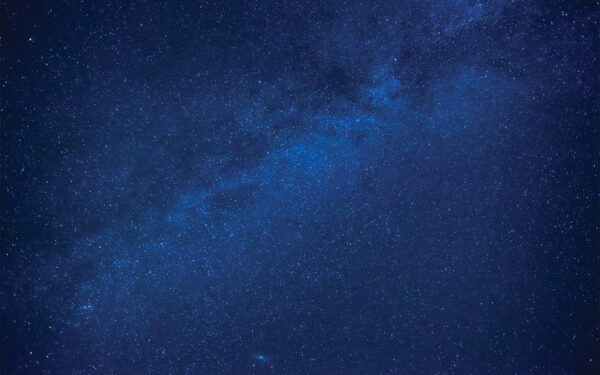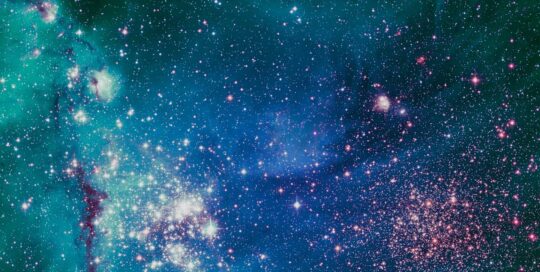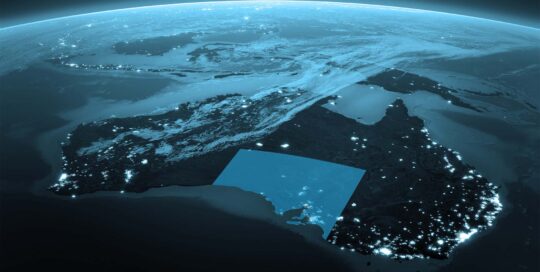Earth Observation (EO) satellites and the data they provide have a meaningful impact on the lives of Australians, from enabling weather forecasting to helping farmers better manage their land and crops. Australia relies heavily on E0 data to support a broad range of industries, such as disaster management and bushfire detection, minerals exploration, climate change monitoring, ensuring food security, as well as Defence applications – and South Australia is playing a leading role in the development of this sovereign capability. From machine learning and data processing to Internet of Things (IoT) and developing the satellites and sensor packages, South Australia’s expertise spans the full spectrum of EO needs.
Earth Observation from space is recognised by the Australian Space Agency as a priority for the Australian space sector because of its potential to lift the broader economy and improve the lives of all Australians.
Australia’s leading national space industry and research consortium, the SmartSat Cooperative Research Centre (CRC), is focusing its efforts on advancing EO – one of the CRC’s three key research programs. Headquartered in Adelaide, the CRC is building on Australia’s expertise in transforming ever-increasing streams of satellite data into essential, decision-ready information for industry, government and Defence.
SmartSat CRC’s Craig Williams, who manages the consortium’s Next Generation Earth Observation Data Services program from their Adelaide office, said leveraging EO data will create efficiencies across a broad range of sectors and open up new activities in mining, agriculture, urban planning and disaster management in ways that have not previously been possible.
“EO data is already extensively used in mining exploration. With better sensors using hyperspectral technology, detection and identification of surface minerals can lead to new mineral deposits being found and rehabilitation of mine sites can be better managed,” he said.
“In agriculture, monitoring soil condition, moisture, crop types and disease can all help understand the yield from Australia’s farms and provide the information needed to maximise it. In grazing, it is also possible to manage feed more effectively and understand paddock degradation.”
While the benefits of EO are well known, presently, the country’s supply of EO data is primarily derived from internationally owned satellite infrastructure. According to Craig, it is vital the country develops its own sovereign satellite and sensor capability.
“Relying on sensors and satellites that are built and owned by international companies or governments means that we will never have control over the data collection or have sensors that are optimised for our conditions and vegetation,” he said. “By promoting a sovereign capability in Australia, we can develop systems that are built specifically to our environment and needs and be able to prioritise tasking for Australian opportunities to benefit industry and the government.”
An early campaigner for the benefits of sovereign space-derived data, the South Australian Government has embarked on a mission to launch its own state satellite in 2023.
The South Australian Space Services Mission satellite, Kanyini, is being led by the SmartSat CRC in partnership with two South Australian space companies – Inovor Technologies and Myriota. One of only a few Australian satellite manufacturers, Inovor Technologies is designing and building the satellite. Adelaide-based global space company Myriota is managing the Internet of Things payload, which will collect data from devices and sensors on the Earth’s surface.
The HyperScout 2 hyperspectral imaging payload was developed by Dutch company Cosine as part of the European Space Agency’s InCubed Programme. The HyperScout 2 combines hyperspectral and thermal imaging with high-level data processing and Artificial Intelligence (AI) capabilities that enable smart processing of hyperspectral data directly on orbit. Once launched in 2023, the satellite will provide services to state government departments as well as educational opportunities for South Australian schools.
EO data is already extensively used in mining exploration. With better sensors using hyperspectral technology, detection and identification of surface minerals can lead to new mineral deposits being found and rehabilitation of mine sites can be better managed.
Further recognising the importance of EO and sovereign capability, the Australian Space Agency has launched the National Space Mission for Earth Observation program in partnership with CSIRO, Geoscience Australia, the Bureau of Meteorology and Department of Defence. The almost $1.2 billion program will see Australia design, build and operate four new satellites, strengthening the nation’s sovereign satellite capability and creating hundreds of new jobs.
South Australian Space Industry Centre Chief Executive Richard Price said this Australian-led mission will help propel the nation’s space industry and reinvigorate space manufacturing. “This mission is a unique opportunity to support Australia’s space sector to scale-up. It’s important, but challenging, to get the balance right between mission performance, establishing the foundations for a sustainable satellite manufacturing base, and delivering to a tight schedule,” he said.
Through the Modern Manufacturing Initiative, the Australian Government is also investing in new infrastructure across the country, such as the Australian Space Park in South Australia. This will support the future manufacturing requirements of the space industry and secure the advancement of the nation’s sovereign space capabilities.
In 2021, the Australian Space Park was announced as the country’s first dedicated space manufacturing hub. Due to commence operations in 2024, it will have the capacity to assist EO observation capability and the development of intelligent satellite systems by bringing companies together to collaborate on projects.
In 2021, the Australian Space Park was announced as the country’s first dedicated space manufacturing hub. Due to commence operations in 2024, it will have the capacity to assist EO observation capability and the development of intelligent satellite systems by bringing companies together to collaborate on projects. Crucially, space manufacturers will have access to a Common User Facility (CUF), supporting the assembly and testing of small satellites and enabling companies to manufacture at scale. “The CUF is being designed in extensive consultation with the Australian space community, so it will meet the requirements of the broader space industry and not one particular business,” Richard said.
South Australia has growing expertise in building and delivering satellite systems that can provide vital EO data to support a variety of applications. Momentum in South Australia’s thriving space ecosystem is picking up pace, with a number of local companies announcing major milestones in developing leading-edge EO solutions.
Fleet Space Technologies’ newly launched satellite project, GeoSphere, is set to revolutionise the mining industry. It combines wireless geodes, edge computing and a constellation of low Earth orbit nanosatellites to search for resources such as copper, nickel, gold and lithium that are being used for zero-emission technologies. Founded in South Australia, Nova Systems has made the bold move to collaborate with emerging EO and data company Satellogic as their founding partner in Australia, giving Australian industry and government clients greater access to highresolution satellite imagery and geospatial intelligence. With its only overseas subsidiary based in Adelaide, UKfounded company Digital Content Analysis Technology (D-CAT), is supporting infrastructure and planning projects in regional Australia through satellite-enabled monitoring and analytics. The GRAVITY Challenge champion is working closely with South Australia’s Department for Infrastructure and Planning to improve road maintenance and planning, as well as increase awareness and responsiveness to environmental changes to the network such as flooding.
With a rich space heritage, a thriving community of world-leading researchers and thought leaders and a growing ecosystem of more than 100 innovative space organisations, Richard said South Australian industry stands poised to support the Australian Space Agency’s National Space Mission for Earth Observation program.
“This mission presents a great opportunity for South Australian industry to play a pivotal role in building our nation’s sovereign EO capability. We have established companies here that provide specialist technology and facilities, space-based solutions, and bespoke satellites for customer needs. This expertise will be integral to furthering our national endeavours to build space heritage, provide secure access to and advanced processing of data from space and expand our satellite design and manufacturing capability.”





